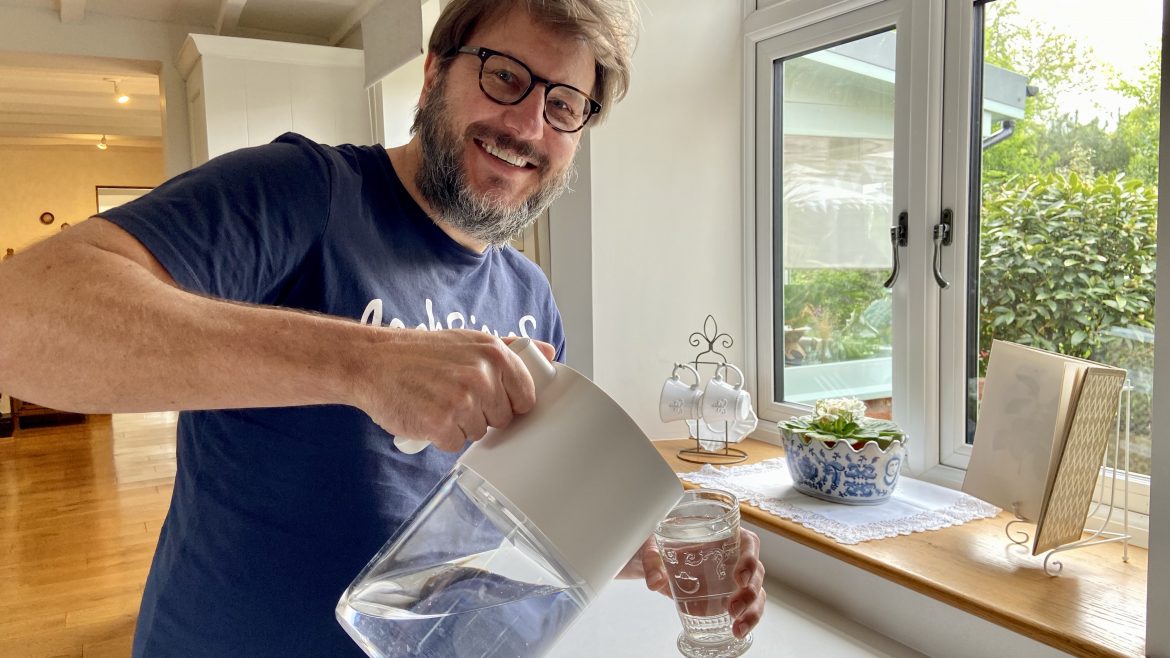The Larq pitcher PureVis is an innovative home water filtration system that combines UV-C LED technology with an advanced filtration system to provide pure and clean drinking water. The pitcher is designed with a sleek and modern look that will complement most kitchen decors.
To find out more about the LARQ Pitcher PureVis visit their website
One of the standout features of the Larq pitcher PureVis is its UV-C LED technology. The pitcher is equipped with a powerful UV-C LED light that is capable of destroying up to 99.9999% of bacteria and viruses in the water. This technology is highly effective and has been extensively tested to ensure that it meets industry standards for water filtration.
In addition to its UV-C LED technology, the Larq pitcher PureVis also features an advanced filtration system that is designed to remove impurities from the water. The pitcher is equipped with a replaceable filter cartridge that is capable of removing contaminants such as chlorine, lead, mercury and other harmful chemicals. The filter is also designed to improve the taste and odour of the water, leaving it crisp and refreshing.
The Larq pitcher PureVis is an excellent water filtration system that combines the latest in technology with an advanced filtration system to provide pure and clean drinking water. Its ease of use, large capacity, and eco-friendliness make it an excellent choice for families and individuals who want to have access to clean drinking water.
Toxins that are present in UK tap water
PFAS (per- and polyfluoroalkyl substances) and PFOS (perfluorooctanesulfonic acid) are synthetic chemicals that have been used in a wide range of industrial and consumer products, including non-stick cookware, food packaging, stain-resistant carpets and fabrics, firefighting foam, and more. They are persistent in the environment, meaning they do not break down easily and can accumulate in the body over time.
Studies have shown that exposure to PFAS and PFOS can be harmful to human health. These chemicals have been linked to a range of health problems, including changes in hormone levels, increased risk of cancer and damage to the liver and immune system. PFAS and PFOS have also been associated with increased cholesterol levels and decreased vaccine effectiveness.
Due to the potential risks to human health, many countries have taken action to regulate or ban the use of PFAS and PFOS in certain products. However, these chemicals continue to be detected in the environment and in human blood samples, highlighting the need for continued efforts to reduce exposure and prevent further contamination.
HAA5 (Haloacetic acids) are a group of five chemicals that are formed when chlorine is used to disinfect drinking water. The five chemicals are monochloroacetic acid, dichloroacetic acid, trichloroacetic acid, monobromoacetic acid and dibromoacetic acid.
Exposure to HAA5 has been linked to a range of health problems, including an increased risk of cancer, reproductive and developmental problems, and kidney and liver damage. Studies have also shown that long-term exposure to HAA5 can have harmful effects on the nervous system and may contribute to developmental delays in infants and children.
The International Agency for Research on Cancer (IARC) has classified HAA5 as a possible human carcinogen, meaning it has the potential to cause cancer in humans.
It is important to note that the risk of adverse health effects from HAA5 in drinking water depends on the level and duration of exposure. To reduce exposure, individuals can use a water filtration system that is certified to remove HAA5 such as the Larq water pitcher.
